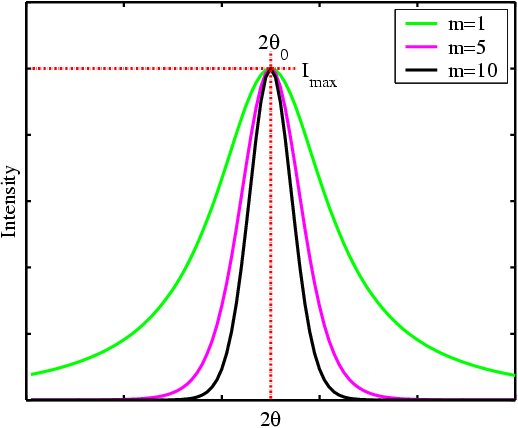 |
Peak Shape Functions
III. Pearson VII |
 |
Peak Shape Functions
III. Pearson VII |
Pearson VII Function
The Pearson VII function was a popular function during the 1980s and 1990s for describing peak shapes from conventional X-ray powder diffraction patterns, though it has now been superceded in popularity by the pseudo-Voigt peak-shape function (described on the next page). The Pearson VII function is basically a Lorentz function raised to a power m:
| w2m
|
where m can be chosen to suit a particular peak shape and w is
related to the peak width. Special cases of this function are that it becomes a
Lorentzian as m → 1 and
approaches a Gaussian as

|
© Copyright 1997-2006.
Birkbeck College, University of London.
|
Author(s):
Paul Barnes Simon Jacques Martin Vickers |